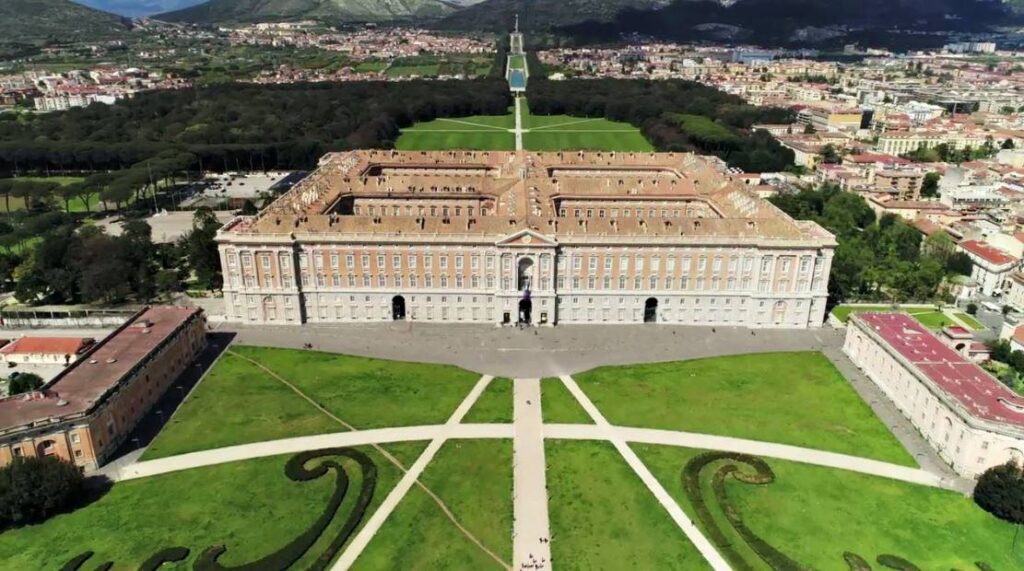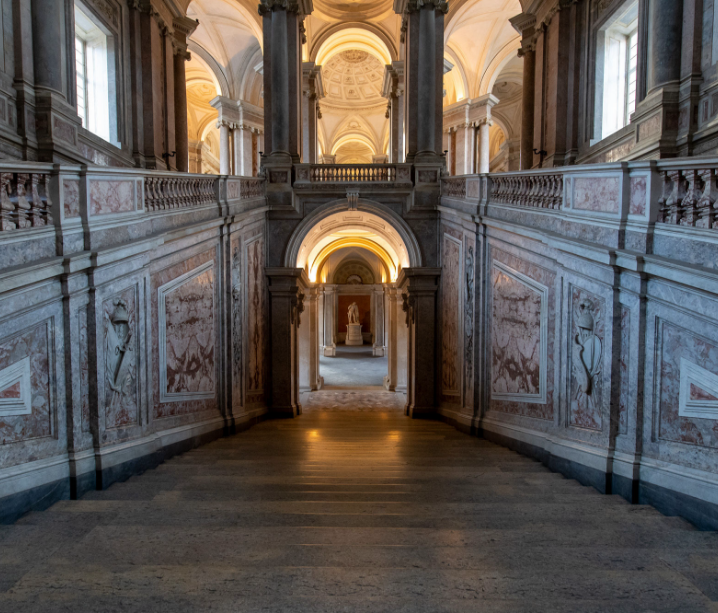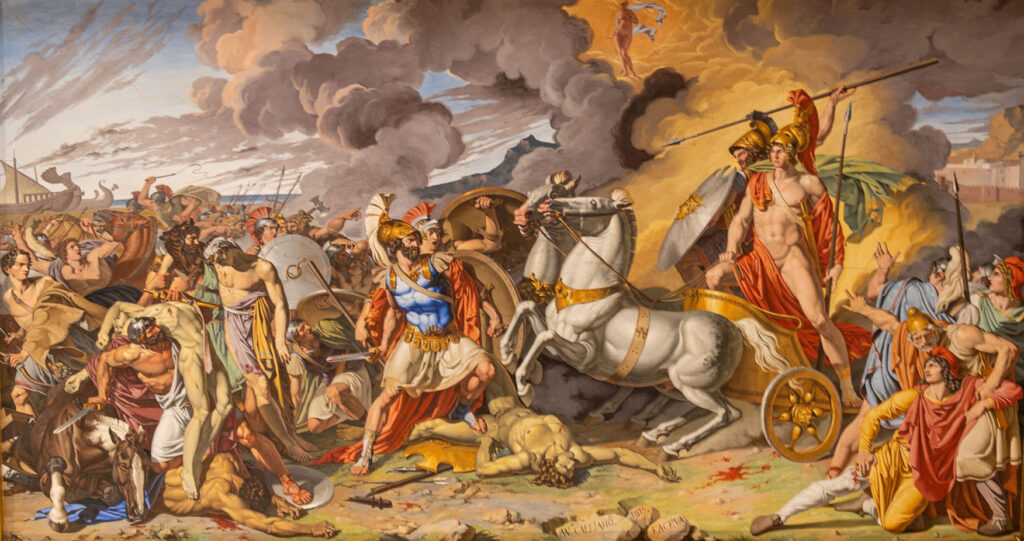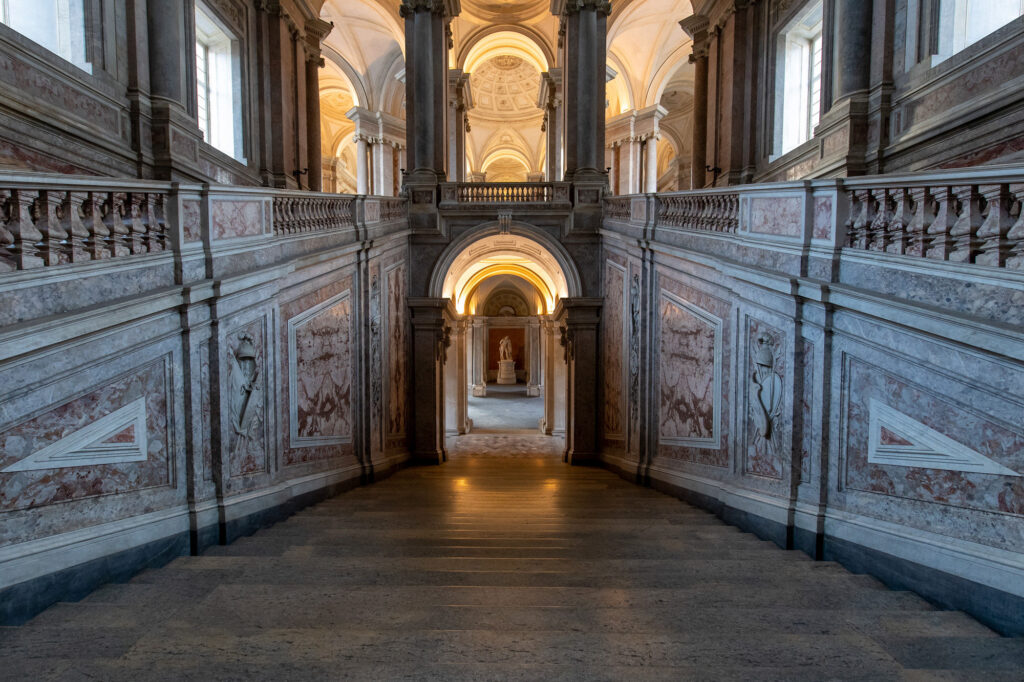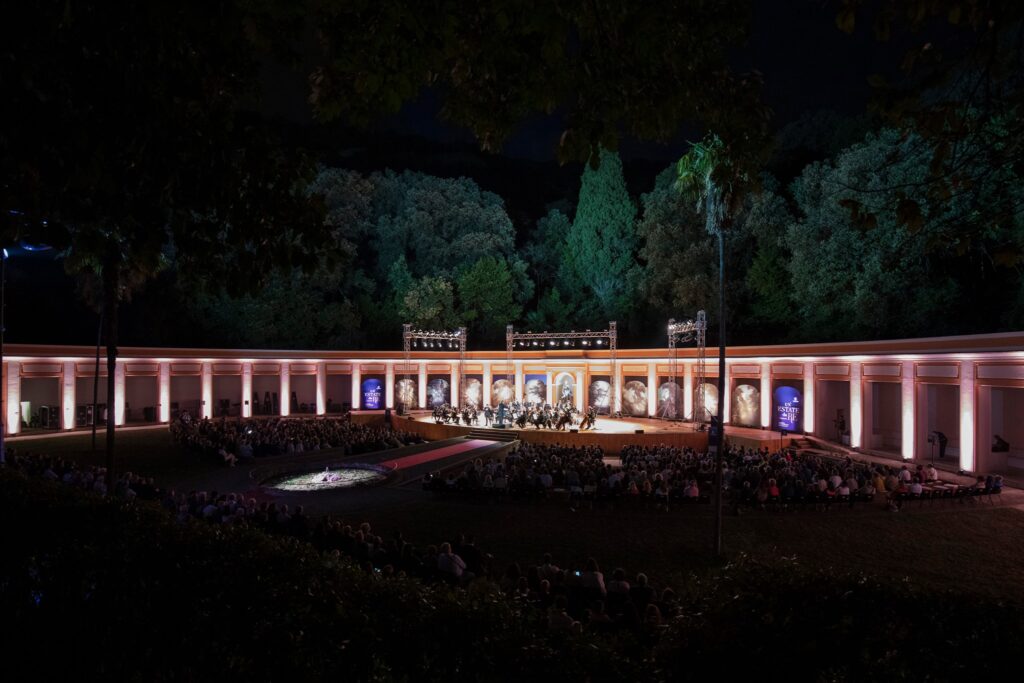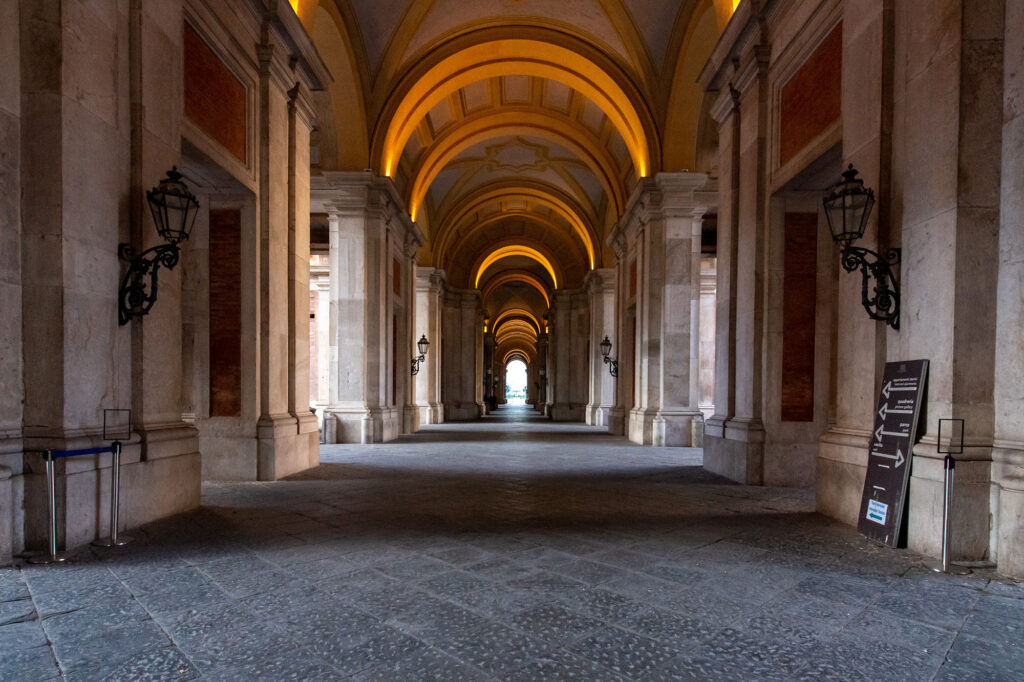The prestige of the Bourbons in the lushness of greenery
Since its origin, the boost given to nursery activity made the English Garden an important centre for botanical experimentation, known throughout Europe. The Serra Grande (The Big Greenhouse), designed in 1863, was added not far from the two eighteenth-century greenhouses. Modern wood-burning boilers allowed the cultivation of prestigious exotic species. The plants farmed in the Royal Palace plots were used in other Royal Sites, but also sold to the public thanks to a catalogue published by the court administration. The rose garden and the so-called “scolle” of the camellias welcome an important floral collection, which offers its best from December to May. Nearby, a large pool dominated by a Putto riding a newt is dedicated to the cultivation of water lilies.
Currently, the greenhouses area hosts “Le Serre di Graefer”, a project to recover the productive spaces of the English Garden, realized thanks to the public-private partnership, with a view to circular economy and sustainability. Find out more.
 Types of greenhouses
Types of greenhouses
Masonry and barrel greenhouse
Late 18th century
Used to shelter plants that could not withstand the winter cold and were instead placed on shaded steps – the so-called cassoni – during the summer months.



Begonia greenhouse
Second half of the 19th century
Made of iron and glass at the end of the 19th century, intended for the collection of begonias and succulents.



Serra Grande (The Big Greenhouse)
1862
Intended by Terracciano for the acclimatization of the two specimens of Chorisia speciosa kept here in the open ground and still visible today, to use the woolly fiber that wraps the seeds in the local manufacturing industry.



Modern greenhouse
1980s
The greenhouse area also includes a modern greenhouse, built in the 1980s and air-conditioned to encourage plant growth.




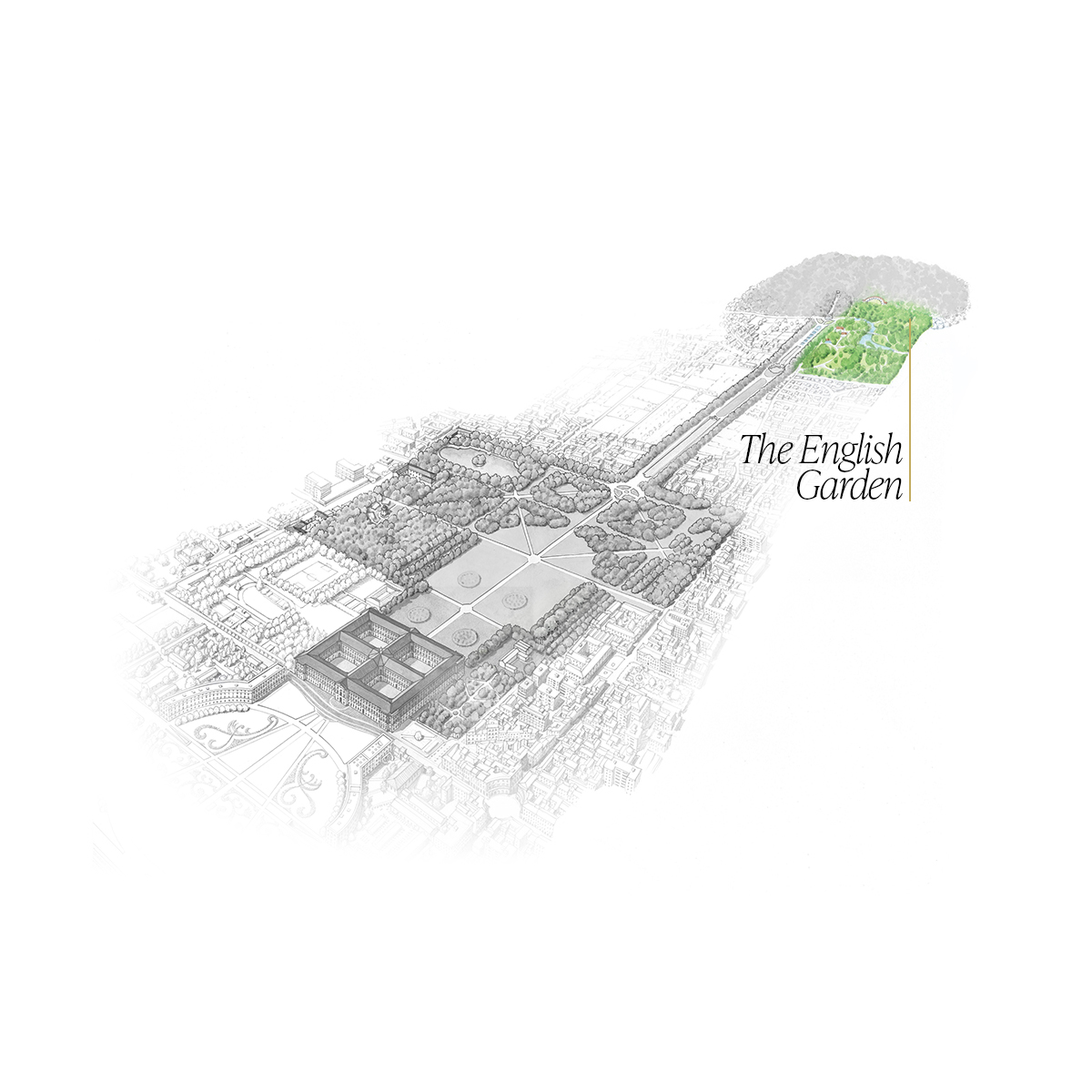

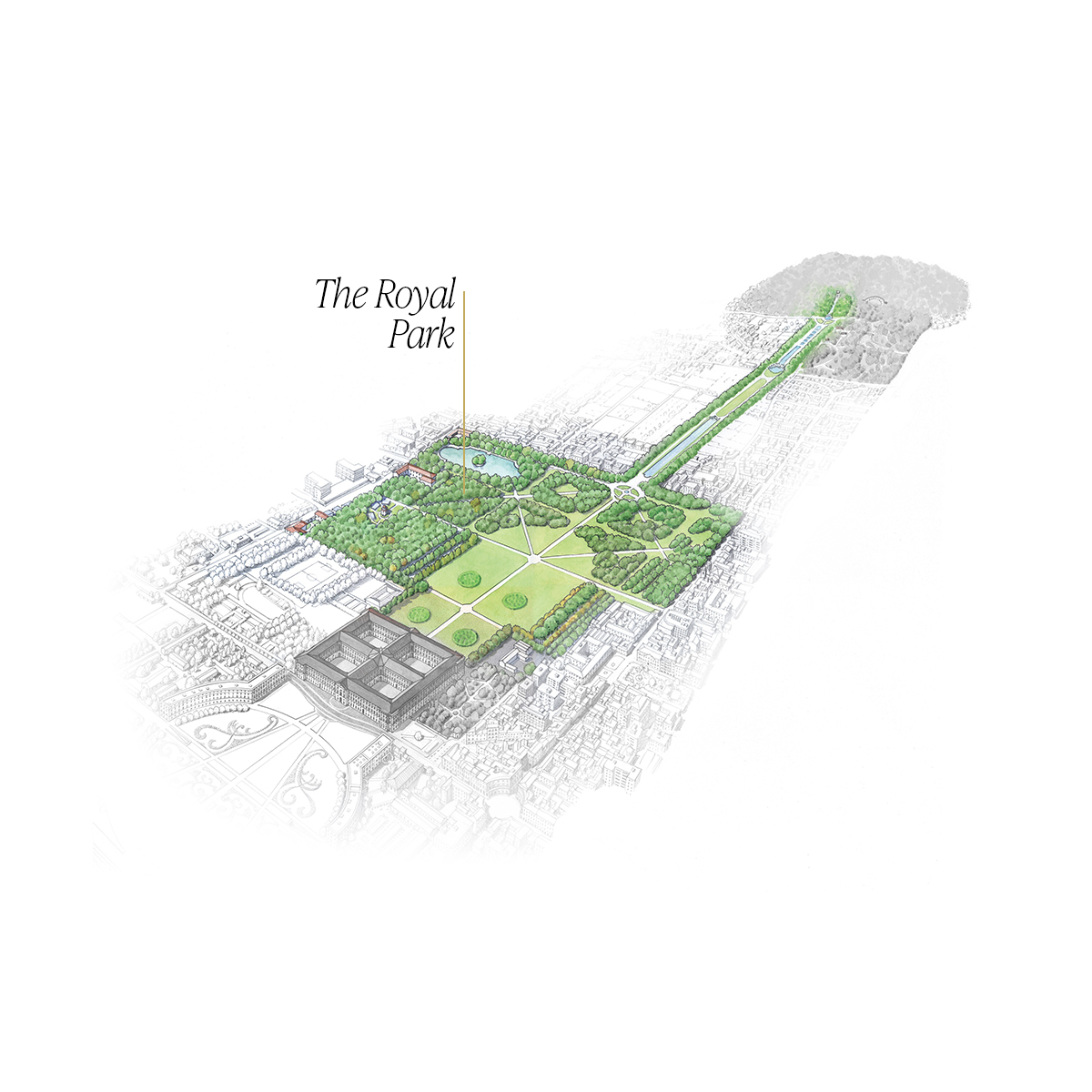
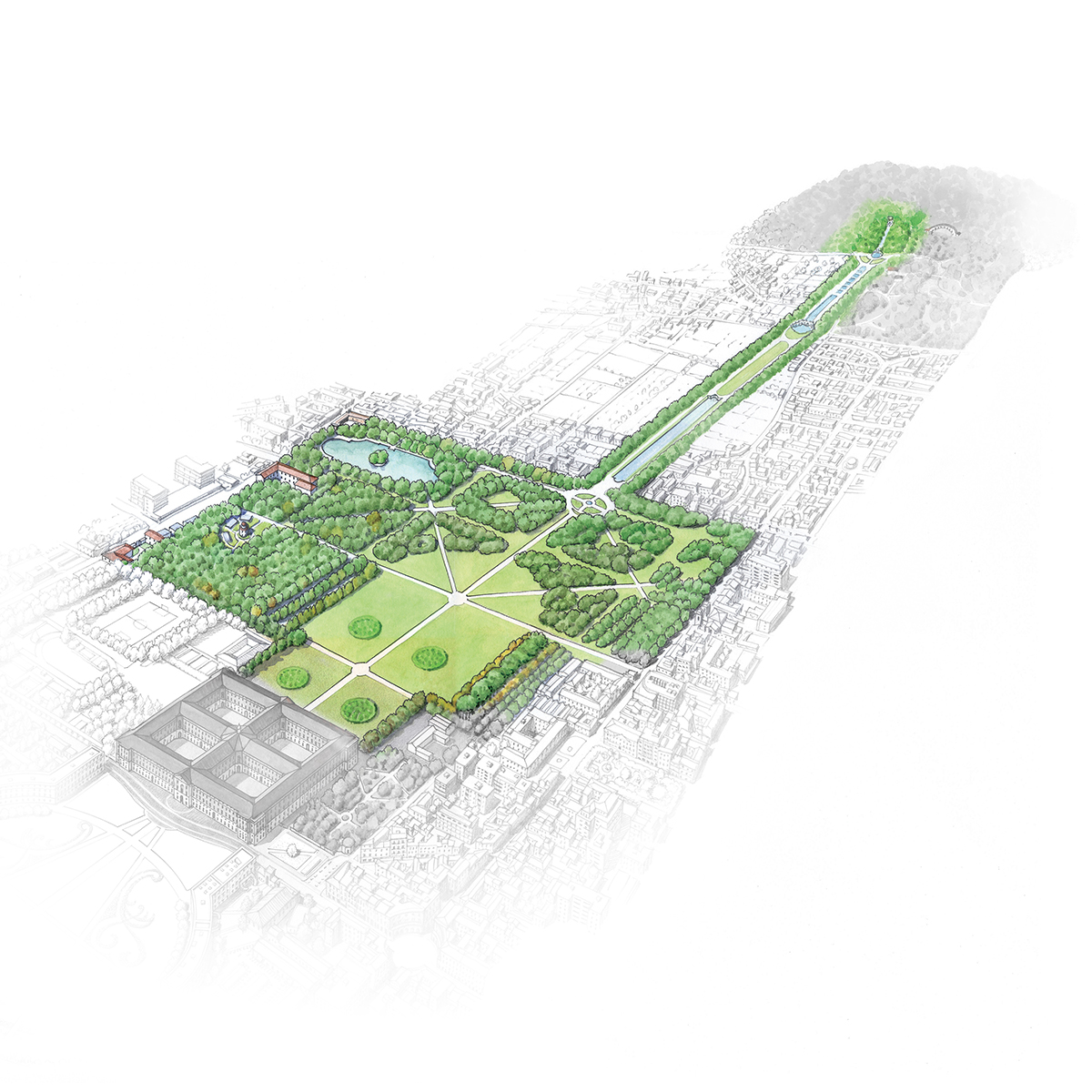
 Via d'acqua
Via d'acqua Castelluccia
Castelluccia Peschiera
Peschiera The Fountain of Dolphins
The Fountain of Dolphins The Fountain of Aeolus
The Fountain of Aeolus The Fountain of Ceres
The Fountain of Ceres The Fountain of Diana and Actaeon
The Fountain of Diana and Actaeon The Fountain of Venus and Adonis
The Fountain of Venus and Adonis The waterfall and Torrione
The waterfall and Torrione The Bosco Vecchio (Old Wood)
The Bosco Vecchio (Old Wood) The Margherita Fountain
The Margherita Fountain





